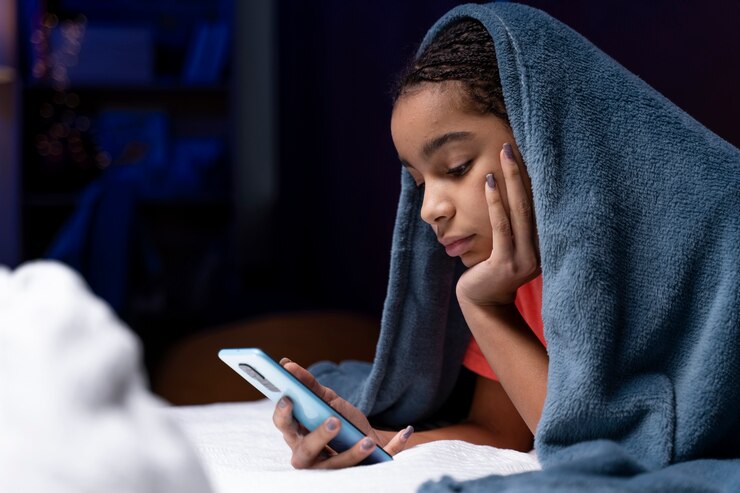Smartphones Impacts on Human Health
In a world where smartphones have become an integral part of our daily lives, it’s crucial to explore smartphone impact on human health. From convenience to connectivity, smartphones have revolutionized the way we live, work, and communicate. However, this technological advancement comes with its set of challenges and consequences. The topic “Smartphones Impacts on Human Health” is very important in terms of its future trends.
Introduction
Smartphones have undoubtedly transformed the way we navigate the world, bringing information and connectivity to our fingertips. As we delve into the positive and negative aspects of smartphone usage, it’s essential to consider their implications on our overall well-being.
Importance of Smartphones
Before we explore the drawbacks, it’s essential to acknowledge the positive aspects of smartphones. They enhance communication, provide instant access to information, and offer various tools and applications that simplify our daily tasks.
Eye Strain and Digital Fatigue
One of the primary concerns associated with prolonged smartphone use is eye strain and digital fatigue. Staring at screens for extended periods can lead to headaches, dry eyes, and blurred vision. Addressing these issues is crucial for maintaining eye health.
Tips for Reducing Eye Strain
The strain on our eyes can be alleviated through practical tips. Taking regular breaks, following the 20-20-20 rule (looking at something 20 feet away for 20 seconds every 20 minutes), adjusting screen brightness, and using larger fonts can significantly reduce eye strain.
Sleep Disruption
Smartphones, often used as bedtime companions, can disrupt our sleep patterns. The blue light emitted by screens inhibits melatonin production, making it harder to fall asleep and achieve restful sleep.
Blue Light and Sleep Patterns
Understanding the impact of blue light on our circadian rhythm is essential. Limiting screen time before bedtime and enabling night mode settings can mitigate sleep disturbances. Creating a calming bedtime routine that doesn’t involve screens can further improve sleep quality.
Mental Health Impact
The constant connectivity facilitated by smartphones has implications for mental health. Social media, in particular, can contribute to anxiety, depression, and feelings of inadequacy.
Social Media and Anxiety
The curated nature of social media content can create unrealistic expectations. Setting boundaries and mindful usage can help mitigate the negative impact on mental health. Engaging in regular social media detoxes, where one takes a break from platforms, can also contribute to improved mental well-being.
Physical Health Consequences
The convenience of smartphones can inadvertently lead to a sedentary lifestyle, contributing to various physical health issues.
Sedentary Lifestyle and Exercise
Finding a balance between screen time and physical activity is crucial. Incorporating regular exercise into daily routines can counteract the negative effects of a sedentary lifestyle. Simple activities like stretching, walking, or using fitness apps can make a significant difference.
Radiation Concerns
While research on the long-term effects of smartphone radiation is ongoing, it’s prudent to be aware of potential risks and take measures to minimize exposure.
Mitigating Radiation Exposure
Using hands-free options and minimizing prolonged phone-to-ear contact can help reduce radiation exposure. Staying informed about technological advancements is key. Additionally, choosing smartphones with lower SAR (Specific Absorption Rate) values can further minimize potential risks.
Addiction and Dependency
Smartphone usage can turn into a habit bordering on addiction, impacting our ability to engage in real-world interactions.
Balancing Smartphone Usage
Setting usage boundaries, participating in digital detoxes, and fostering offline connections can help strike a balance between virtual and real-life interactions. Creating designated “tech-free” zones or times during the day can encourage healthier habits.
Productivity Challenges
The very devices designed to enhance productivity can become sources of distraction, hindering our ability to focus on tasks.
Overcoming Distractions
Implementing productivity techniques, such as time blocking, setting specific goals, and using productivity apps, can help manage distractions and improve overall efficiency. Understanding and acknowledging personal productivity styles can further enhance the effectiveness of these strategies.
Parental Concerns for Smartphones Impacts on Human Health
For parents, managing their children’s smartphone usage poses unique challenges. Setting healthy boundaries is essential for fostering a balanced digital lifestyle.
Setting Healthy Boundaries for Children
Establishing screen time limits, monitoring content, and engaging in open communication with children about responsible smartphone use are vital for their well-being. Parents can lead by example, demonstrating mindful smartphone habits for their children to emulate.
Technological Solutions
Fortunately, various apps and tools are designed to promote digital wellness and help individuals manage their smartphone usage effectively.
Apps for Digital Wellness
Exploring apps that track screen time, provide reminders for breaks, and encourage mindful usage can contribute to a healthier relationship with smartphones. Some notable apps include Forest, Moment, and Screen Time.
Impact on Relationships
While smartphones connect us globally, they can sometimes disconnect us from those physically present.
Nurturing Real-Life Connections
Prioritizing face-to-face interactions, setting aside dedicated quality time, and practicing digital etiquette can strengthen real-life relationships. Encouraging open conversations about the impact of technology on relationships can foster understanding and connection.
Smartphones and Academic Performance
For students, smartphones can be both a tool and a distraction. Striking a balance is crucial for academic success.
Finding a Balance for Students
Implementing study routines, utilizing productivity apps, and establishing tech-free study zones can enhance focus and academic performance. Encouraging students to use smartphones as educational tools and providing guidance on responsible usage can contribute to a positive academic environment.
Future Trends
As technology evolves, so will its impact on our lives. Anticipating future trends allows us to proactively address emerging challenges.
Evolving Technologies
The future holds promise for technologies that prioritize user well-being. From advancements in screen technology to features promoting digital detox, staying informed about evolving technologies can guide individuals in making healthier choices.
Conclusion
In conclusion, while smartphones offer unparalleled convenience and connectivity, it’s essential to navigate their usage mindfully. Balancing the benefits with the potential drawbacks is key to fostering a healthy relationship with technology.
FAQs for Smartphones Impacts on Human Health
Are all smartphones equally harmful to health?
- The level of harm can vary based on usage patterns and individual habits. It’s crucial to be mindful of one’s smartphone usage.
Can smartphone addiction be treated?
- Yes, smartphone addiction can be addressed through setting boundaries, digital detoxes, and seeking support if needed.
What is the recommended daily screen time for children?
The recommended daily screen time for children varies based on their age and developmental stage. According to guidelines from reputable health organizations, such as the American Academy of Pediatrics (AAP), here are general recommendations:
Children under 18 months:
It’s recommended to avoid the use of screen media, except for video chatting.
Children aged 18 to 24 months:
If parents choose to introduce digital media, it should be high-quality programming, and they should watch it with their child to help them understand what they are seeing.
Children aged 2 to 5 years:
Limit screen time to one hour per day of high-quality programming, co-view with the child, and discuss content to enhance understanding.
Children aged 6 years and older:
Establish consistent limits on the amount of screen time and ensure it doesn’t interfere with adequate sleep, physical activity, and other healthy behaviors.
It’s crucial for parents to consider the content of the screen time, ensuring it is educational and age-appropriate. Additionally, monitoring the overall well-being of the child, including their physical and mental health, is essential in determining an appropriate balance of screen time for each individual child.
Do blue light filters on phones really work?
- Yes, blue light filters can help reduce the impact of blue light on sleep patterns and eye strain. These filters adjust the color temperature of your device’s screen, minimizing the disruptive effects of blue light.
How can parents monitor their children’s smartphone usage?
- Parents can use a combination of strategies to monitor and manage their children’s smartphone usage. This includes setting up parental controls, discussing responsible device use, and utilizing monitoring apps to track screen time and content.
What are the potential long-term effects of smartphone radiation?
- The long-term effects of smartphone radiation are still under investigation. While there is no conclusive evidence of harm, it’s advisable to stay informed about research developments and follow recommended safety practices, such as using hands-free options.
Can excessive smartphone use affect academic performance?
- Excessive smartphone use, particularly for non-educational purposes, can potentially impact academic performance. Creating a balanced approach to smartphone usage, emphasizing focused study time, and using educational apps can contribute positively to academic success.
Are there specific exercises to counteract the physical effects of smartphone use?
- Yes, incorporating specific exercises can help counteract the physical effects of prolonged smartphone use. Neck stretches, eye exercises, and hand and wrist stretches can alleviate discomfort and reduce the risk of strain-related issues.
Is it better to use apps for digital wellness or rely on built-in smartphone features?
- The choice between apps for digital wellness and built-in features depends on individual preferences and needs. Some users find dedicated apps more customizable, while others prefer the simplicity of built-in features. Experimenting with both can help determine what works best.
How can individuals stay updated on the latest trends in smartphone technology?
- Staying informed about the latest trends in smartphone technology can involve following reputable tech news sources, attending industry events, and exploring technology blogs and forums. Regularly checking for software updates on your device can also provide insights into emerging features.


